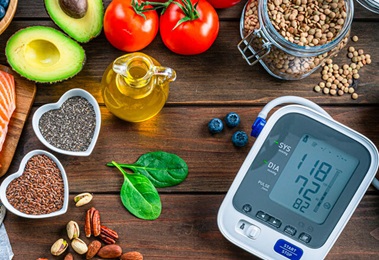For Parents: Bicycle, In-Line Skating, Skateboard and Scooter Safety
Safety Statistics for Bicycles, In-line Skating, Skateboards, and Scooters
Over 70 percent of children between the ages of 5 and 14 ride bicycles. In-line skating and skateboarding are also very popular among this age group. Although a great form of exercise, riding a bike, in-line skating, or skateboarding without protective gear can be dangerous. Next to motor vehicle-related injuries, bicycles injure more children than any other consumer product, according to the National SAFE KIDS Campaign.
Head trauma is the most common injury in accidents involving bikes, in-line skates, skateboards and scooters. Head injuries are the leading cause of death and disability in these types of crashes. Wearing a helmet can reduce the risk of death or injury and reduce the severity of the injury in the event of a crash. However, even with aggressive bicycle helmet programs and laws, approximately 55 percent of children don't always wear a helmet while bicycling.
Wearing a helmet whenever riding a bicycle, in-line skates, or a skateboard should be an automatic habit. Helmets should fit properly on your child's head and also be fastened correctly. A properly-fastened and fitting helmet does not move around on the head.
Teaching your children bicycle, in-line skating, and skateboarding safety could save lives.
The Importance of Helmets
Bicycling is very popular--in fact, it is estimated that 80 million Americans ride bikes of many different types. To participate in safe and enjoyable bicycling, cyclists of all ages should follow safe riding habits. Children and adults should always wear helmets when riding bicycles:
-
According to SAFE KIDS, bicycle helmets have been shown to reduce the risk of head injury by as much as 85 percent.
-
There has been a 54 percent reduction in the number of bike-related deaths since 1999.
Which Helmet to Purchase
Here are suggestions for purchasing a helmet:
-
Helmets should be approved by the Consumer Product Safety Commission, the Snell Foundation, or the American Society for Testing and Materials.
-
The helmet should fit comfortably and snugly. It should sit on your (or your child's) head in a level position and not rock from side to side.
-
The helmet should have a chin strap and buckle to keep the helmet in place.
-
The helmet should be made out of a hard outer shell and an absorbing liner at least one-half inch thick.
Many children (and adults) resist wearing a helmet. Point out that athletes wear helmets for their protection, and, for children, suggest ways the helmet could be decorated to personalize it.
Protecting Children and Adults from Bicycle Injuries
Suggestions for preventing bicycle injuries:
-
You can't control a bicycle that is too large. You should be able to straddle the bike and stand with both feet flat on the ground.
-
Younger children may need to ride a bicycle with training wheels.
-
A child must be able to stop the bike by using the brakes.
-
Learn the proper hand signals for left turns, right turns, and stopping. Make certain you understand and observe all traffic signals and signs. Children who aren't yet coordinated enough to use hand signals and still maintain control of their bike should not ride in the street.
-
Children should ride on sidewalks until they are at least 10 or 11 years old.
-
Look left, right, and left again, before riding into traffic from a sidewalk, driveway, or parking lot.
-
When riding on the street, children should be in a straight line near the curb, and be alert for car doors opening into traffic lanes. Both children and adults should ride with rather than against traffic.
-
Children should not ride a bike at dusk or at night as this is when most fatal accidents happen. If a child is still outside when it turns dark, the bicycle light must be turned on and the child should be wearing light or reflective clothing.
-
Make certain the bike has safety reflectors. All bikes should have reflectors on the front, rear, and wheel spokes.
In-line Skates
The following recommendations are from the National Safety Council (NSC) and the U.S. Consumer Product Safety Commission:
-
Always wear protective gear, such as elbow and kneepads, gloves, helmets, and wrist guards.
-
Buy durable skates with proper ankle support.
-
Always warm up your muscles before skating by skating slowly for 5 minutes or more.
-
Skate with knees slightly bent to maintain balance.
-
Practice stopping properly without losing balance.
-
Always skate on the right side of sidewalks and other paths.
-
Pass on the left and warn others that you are passing.
-
Don't skate in the street, especially where there is a lot of traffic.
-
Look for and avoid uneven pavement or other surface problems.
-
Check your skates regularly for wear and tear. Make sure the wheels are tightened.
-
Obey all traffic rules.
Skateboards
Skateboards are very popular among children ages 5 to 14. Skateboards should never be used on surface streets. Even experienced skateboarders can fall, so learning how to fall safely can help reduce the risk of severe injuries. The following are recommendations from the NSC regarding how to fall correctly:
-
When losing your balance, crouch down on the skateboard so you have a shorter distance to fall.
-
Try to land on fleshy parts of your body when falling.
-
Try to roll as you fall, which prevents your arms from absorbing all the force.
-
Try to relax, rather than remaining stiff when falling.
Other safety precautions to take when skateboarding include the following:
-
Wear protective gear, such as helmets, padding for wrists, elbows and knees, and closed-toe and slip-resistant shoes.
-
Frequently check the skateboard for wear and tear.
-
Only allow one person per skateboard.
-
Don't hang onto bicycles, cars, or other vehicles while skateboarding.
-
Carefully practice tricks in designated skateboarding areas.
-
Don't skateboard in the street.
Scooters
Although scooters have been around since the 1950s, the popular new scooters are often made of lightweight aluminum, weighing less than 10 pounds. They have quickly risen in popularity and are the cause of more and more emergency room visits. Health officials have seen a dramatic increase in scooter-related accidents and injuries. Most of the injuries happen among boys under the age of 15. The most common injuries are fractures or dislocations to the arm or hand, followed by cuts, bruises, strains, and sprains. Almost half of all injuries tend to happen to the arm or hand, while about one-fourth are to the head and another fourth to the leg or foot. Deaths directly related to scooter accidents have also happened.
The CDC recommends the same precautions for scooters as for bicycling and in-line skating. It is thought that many injuries might be prevented or reduced in severity if protective equipment is worn. Helmets can prevent 85 percent of head injuries, elbow pads can prevent 82 percent of elbow injuries, and knee pads can prevent 32 percent of knee injuries. Although wrist guards are effective in preventing injuries among in-line skaters, the protection they provide against injury for scooter riders is unknown, as wrist guards may make it hard to grip the scooter handle and steer it.
Based on evidence of injury prevention effectiveness for other related activities, the following recommendations may help to prevent scooter-related injuries:
-
Wear an approved helmet that meets safety standards.
-
Use knee and elbow pads.
-
Ride scooters on smooth, paved surfaces without traffic. Don't ride on streets and surfaces with water, sand, gravel, or dirt.
-
Don't ride scooters at night.
Young children should not use scooters without close supervision.





